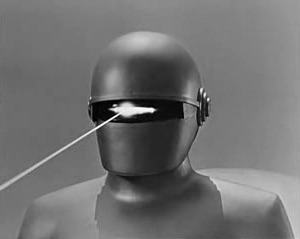Tracy J,
Yes, the "art" part of all of this is becoming very evident to me. Thank you so much for your post.
Nancy Shamanna and blueblood - Thanks for your input as well.
 Forums
Forums
-

MrPotatohead - Name: MrPotatohead
- Who do you know with myeloma?: Me
- When were you/they diagnosed?: March, 2015
- Age at diagnosis: 65
Re: "Mild increased FDG uptake" on PET/CT - what's it mean?
Nancy,
I think PET/CTs are a fairly routine test for myeloma these days, especially at the initial diagnosis stage. PET/CT is the initial go-to imaging test to look for active cancer of almost any kind. However, there are other choices, and choosing the appropriate one is like fitting a puzzle piece into the bigger picture, i.e., it needs to be individualized to the particular circumstance. A puzzle is a great analogy. You may have some pieces of information already, but not others, so you choose your tests accordingly.
Certainly in nonsecretory myeloma, imaging (as a general category) is used more often than in regular myeloma. This is only to compensate for the loss of serum free light chains as a useful test.
I often muse on the craziness of my situation: when I had AL amyloidosis, my lambda light chains were through the roof and rising quickly! But I had NO myeloma. Now when I have nonsecretory kappa myeloma, my light chains have consistently been stone cold normal. Both lambda and kappa. So here's a fun thought experiment – did my auto stem cell transplant for amyloidosis work, or not? After all, my lambda clone disease is still in "complete response" and always has been!
I think PET/CTs are a fairly routine test for myeloma these days, especially at the initial diagnosis stage. PET/CT is the initial go-to imaging test to look for active cancer of almost any kind. However, there are other choices, and choosing the appropriate one is like fitting a puzzle piece into the bigger picture, i.e., it needs to be individualized to the particular circumstance. A puzzle is a great analogy. You may have some pieces of information already, but not others, so you choose your tests accordingly.
Certainly in nonsecretory myeloma, imaging (as a general category) is used more often than in regular myeloma. This is only to compensate for the loss of serum free light chains as a useful test.
I often muse on the craziness of my situation: when I had AL amyloidosis, my lambda light chains were through the roof and rising quickly! But I had NO myeloma. Now when I have nonsecretory kappa myeloma, my light chains have consistently been stone cold normal. Both lambda and kappa. So here's a fun thought experiment – did my auto stem cell transplant for amyloidosis work, or not? After all, my lambda clone disease is still in "complete response" and always has been!
-

Tracy J - Name: Tracy Jalbuena
- Who do you know with myeloma?: Me
- When were you/they diagnosed?: 2014
- Age at diagnosis: 42
Re: "Mild increased FDG uptake" on PET/CT - what's it mean?
Hi Tracy,
I am so glad that tests such as PET and MRI are available to all of us patients, especially as needed!
I actually have not had either test, which you may find surprising. At my Stage 3 diagnosis, the monoclonal blood test, urine SPEP, skeletal survey, and bone marrow biopsy were used. It was so obvious that I had myeloma that treatments were started ASAP, with bisphosphonates and then Velcade / dex. This however, was in 2009, and I cannot know what tests are used for newly diagnosed myeloma patients now. The serum free light chain (sFLC) test was not in use when I was diagnosed either, but now I get that test every month, an improvement in myeloma care here.
I am so glad that tests such as PET and MRI are available to all of us patients, especially as needed!
I actually have not had either test, which you may find surprising. At my Stage 3 diagnosis, the monoclonal blood test, urine SPEP, skeletal survey, and bone marrow biopsy were used. It was so obvious that I had myeloma that treatments were started ASAP, with bisphosphonates and then Velcade / dex. This however, was in 2009, and I cannot know what tests are used for newly diagnosed myeloma patients now. The serum free light chain (sFLC) test was not in use when I was diagnosed either, but now I get that test every month, an improvement in myeloma care here.
-

Nancy Shamanna - Name: Nancy Shamanna
- Who do you know with myeloma?: Self and others too
- When were you/they diagnosed?: July 2009
Re: "Mild increased FDG uptake" on PET/CT - what's it mean?
Mr Potatohead,
Can someone in CR per the blood and urine tests actually have active myeloma? I can understand that if one was nonsecretory, but if not, that is very scary.
Good luck and keep us posted.
Can someone in CR per the blood and urine tests actually have active myeloma? I can understand that if one was nonsecretory, but if not, that is very scary.
Good luck and keep us posted.
-

Janet1520
Re: "Mild increased FDG uptake" on PET/CT - what's it mean?
Hi Janet1520
Your question is essentially mine, which is why I pressed for the PET/CT scan.
I am very close to a complete response after chemotherapy for my kappa light chain myeloma, as measured by the free light chain assay test. And yet I continue to have pronounced bone pain.
So I wondered whether I also might have a nonsecretory clone that continues to attack my bones, in addition to the kappa light chain variety.
The radiologist's report states that there is FDG uptake, indicating activity, but states that the activity could be part of the healing process following my many fractures, or active myeloma. So the test did not conclusively settle the question, to my mind.
I have read on this forum and elsewhere that myeloma patients can in fact harbor multiple clones, but the issue here is whether these clones can be heterogenous with respect to the types of markers needed to gauge progression. So is it possible to have both nonsecretory myeloma and, as in my case, kappa free light chain myeloma? I have not found any material that addresses that question. My oncologist has said that it is extremely unlikely.
I have read about "light-chain escape", in which one's myeloma becomes the light chain variety, and it seems to me that if that kind of change is possible, it may also be possible that the light chain variety might transition to a nonsecretory clone, or else that both might be present at the same time.
I intend to press the radiologist on whether it is truly impossible to differentiate myeloma-mediated FDG uptake versus uptake due to healing processes, such as osteoblast activity. That conclusion seems suspect to me, given that PET/CT scans are routinely used to track progression in cases of nonsecretory myeloma.
Your question is essentially mine, which is why I pressed for the PET/CT scan.
I am very close to a complete response after chemotherapy for my kappa light chain myeloma, as measured by the free light chain assay test. And yet I continue to have pronounced bone pain.
So I wondered whether I also might have a nonsecretory clone that continues to attack my bones, in addition to the kappa light chain variety.
The radiologist's report states that there is FDG uptake, indicating activity, but states that the activity could be part of the healing process following my many fractures, or active myeloma. So the test did not conclusively settle the question, to my mind.
I have read on this forum and elsewhere that myeloma patients can in fact harbor multiple clones, but the issue here is whether these clones can be heterogenous with respect to the types of markers needed to gauge progression. So is it possible to have both nonsecretory myeloma and, as in my case, kappa free light chain myeloma? I have not found any material that addresses that question. My oncologist has said that it is extremely unlikely.
I have read about "light-chain escape", in which one's myeloma becomes the light chain variety, and it seems to me that if that kind of change is possible, it may also be possible that the light chain variety might transition to a nonsecretory clone, or else that both might be present at the same time.
I intend to press the radiologist on whether it is truly impossible to differentiate myeloma-mediated FDG uptake versus uptake due to healing processes, such as osteoblast activity. That conclusion seems suspect to me, given that PET/CT scans are routinely used to track progression in cases of nonsecretory myeloma.
-

MrPotatohead - Name: MrPotatohead
- Who do you know with myeloma?: Me
- When were you/they diagnosed?: March, 2015
- Age at diagnosis: 65
Re: "Mild increased FDG uptake" on PET/CT - what's it mean?
While Spanish is not my first language, I just read something on a Mexican Ministry of Health website on myeloma, which I've never heard before
"El PET puede dar falso positivo si el paciente cursa con proceso inflamatorio por lo cual debe realizarse posterior a 4 semanas de concluir la quimioterapia ó después de 3 meses de la radioterapia"
Source: "Diagnóstico y Tratamiento de Mieloma Múltiple: Evidencias y recomendaciones" (pdf file).
Basically, I believe it says PET can give a false positive if inflammation is present and within 4 weeks of completing chemo or 3 months of finishing radiation.
"El PET puede dar falso positivo si el paciente cursa con proceso inflamatorio por lo cual debe realizarse posterior a 4 semanas de concluir la quimioterapia ó después de 3 meses de la radioterapia"
Source: "Diagnóstico y Tratamiento de Mieloma Múltiple: Evidencias y recomendaciones" (pdf file).
Basically, I believe it says PET can give a false positive if inflammation is present and within 4 weeks of completing chemo or 3 months of finishing radiation.
-

Little Monkey - Name: Little Monkey
- Who do you know with myeloma?: Father-stage 1 multiple myeloma
- When were you/they diagnosed?: March/April of 2015
16 posts
• Page 2 of 2 • 1, 2
